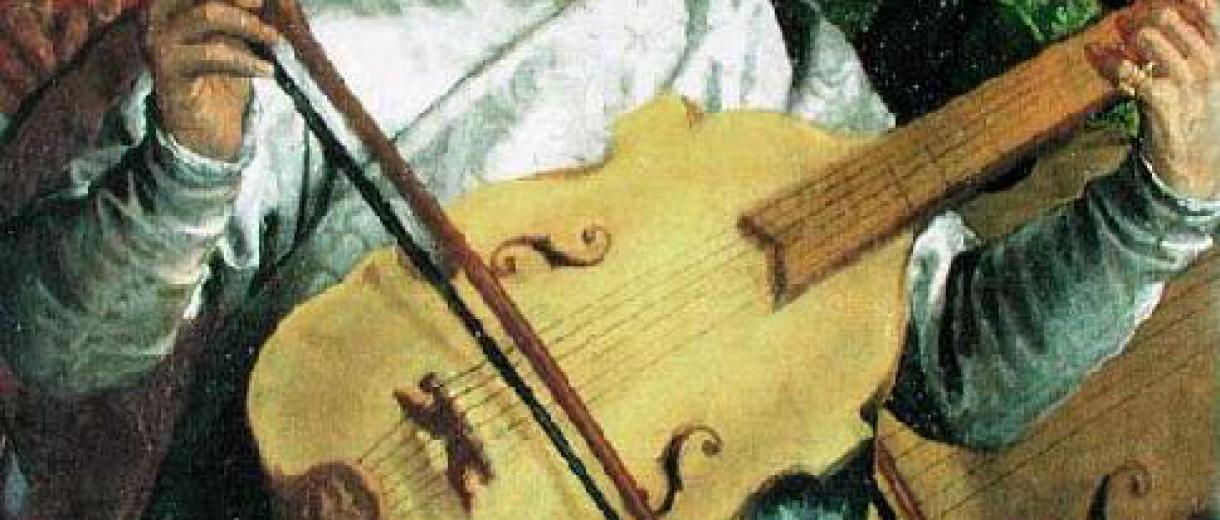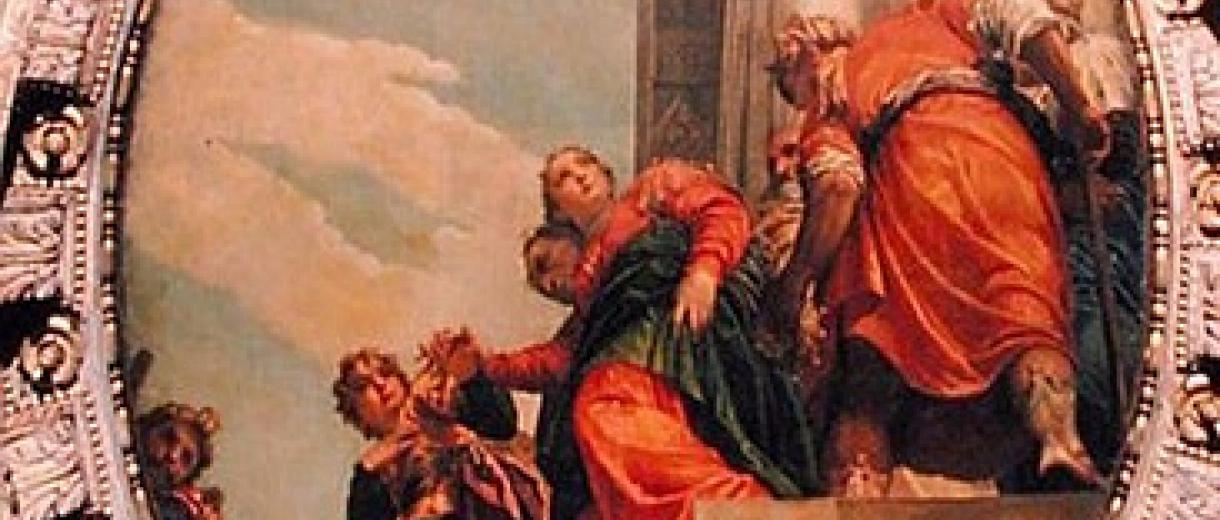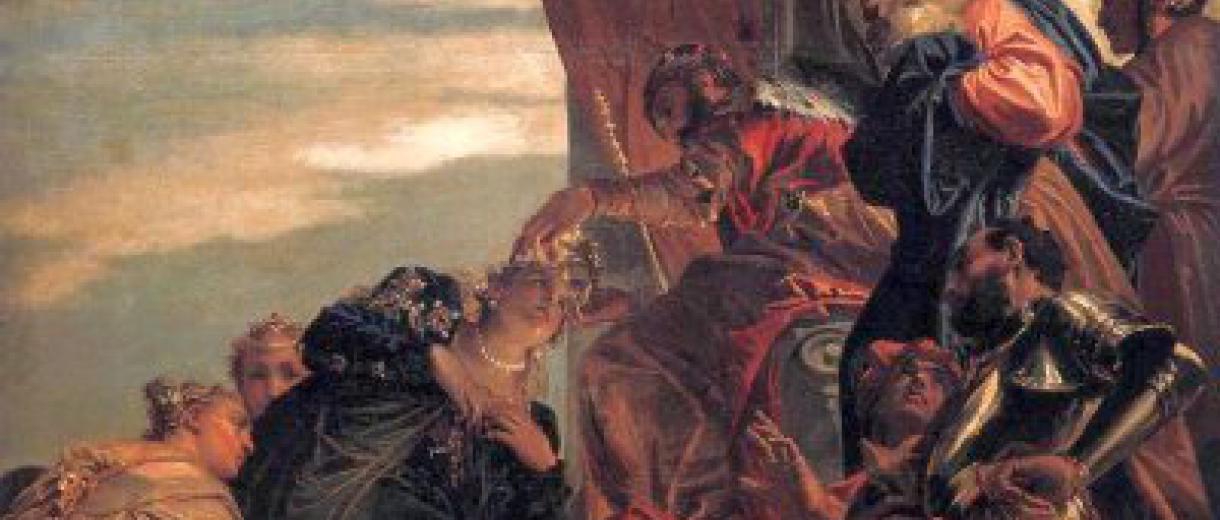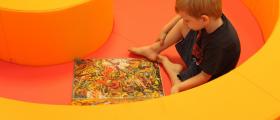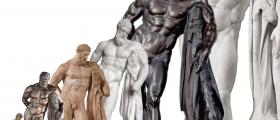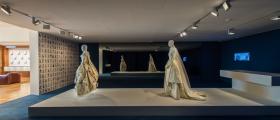Paolo Veronese and the Stories of Esther
 “ The felicity, the verve of Paolo’s paintbrush is among the Wonders. There aren’t strokes neither paintings which are not sure (…). His way of painting has been as writing by an expert hand” A.M Zanetti, Dalla Pittura veneziana, Venezia 1771.
“ The felicity, the verve of Paolo’s paintbrush is among the Wonders. There aren’t strokes neither paintings which are not sure (…). His way of painting has been as writing by an expert hand” A.M Zanetti, Dalla Pittura veneziana, Venezia 1771.
Until July 24th after the conclusion of a long and complex restoration, in the beautiful Palazzo Grimani in Venice, you will be able to assit to the exhibit called Veronese. Le Storie di Ester rivelate. (Veronese. The Esther’s stories revealed.) The exhibition proposes to the public the three masterpieces of Paolo Veronese. The paintings portray The Repudiation of Vasti, Esther crowned by Xerxes and The Triumph of Mordecai, scenes based on the Esther’s Book.
The restoration of the paintings, from 2008 to 2010 and directed by Giulio Marnieri Elia, has given again to these extraordinary works their exceptional chromatic quality. The exhibition is unique and can’t be missed to see from near by the paintings which, in conclusion of the exhibit, will go back definitely in their original place, on the ceiling of the San Sebastiano Church, around 12 meters high. The intervention of restoration has been possible thanks to the generosity of Save Venice Inc.
The exhibition, inaugurated by the Superintendent Giovanna Damiani and cured by Giulio Manieri Elia, is promoted by the Special Superintendence for the Historic, artistic and Etnoantropologic Property and for the Polo museale della cittàa di Venezia e dei comuni della Gronda Lagunare in collaboration with the Patriarchal Curia of Venice and with Save Venice Inc. The organisation is cured by Civita Tre Venezia and produced by Venezia Accademia, Il Corriere del Veneto and the mediapartner of the initiative: Catalogo Marsilio.
Veronese (1528-1588) begins his work on the San Sebastiano ceiling between the end of 1555 and October 1556 with the Stories of Esther, on commission from the prelate Bernardo Torlioni. The artist, 25 years old, just arrived in Venice, obtains immediately the prestigious assignment. He will work for a long time of his existence in this Church, enriching it with historic narrations, iconographic images, and decorative motifs of remarkable creative liberty and making it a place more suitable for his own funerary monument.
The wonderful Palazzo Grimani is the perfect frame for these masterpieces; it's an architectonic and decorative unicum. Born as residence of Antonio Grimani (Doge from 1521 to 1523), it will arrive at the actual building thanks to interventions made by his heirs between 1532 and 1569. The result is an interesting fusion of Venetian and Tuscan architectonic elements; the decoration is also a product of Tuscan and Roman influences with stucchi of Giovanni da Udine and frescoes of Francesco Salviati, Camillo Mantovano and Federico Zuccari. It's about, in the Venice of the Sixteen century, a breeding ground of refined culture, certainly a unavoidable reference for Veronese.
The Restauration of the works has been possibile thanks to contributes from Save Venice Inc.: The Repudiation of Vasti has been sponsored by the California Chapter of Save Venice; The crown of Esther by the Amici in onore di Mary and Howard Frank and The Triumph of Mordecai by the Boston Chapter of Save Venice. The restauration has been done, for the paintings interventions, by Lucia Tito, Rosanna Coppola, Carla Bertorello, Caterina Barnaba, Irene Zuliani (cooperative C.B.C.), the restoration of the frames has been done by Matteo Rossi Doria. The operations has been preceded by a huge diagnostic campaign coordinated by the Laboratorio Scientifico della Soprintendenza directed by Ornella Salvatori; they have conducted researches with Enrico Fiorin (XRF and stratigraphy).
The paintings, mounted on the support of the ceiling of the San Sebastiano Church, have in the centre The Coronation of Esther, Hebrew heroin. The events of her life allude to the triumph of the faith on the heresy with an important ant protestant valence, inevitable in the years of the Council and its doctrinal and normative results.
In 1538, Bernardo Torlioni, after years of moral and discipline disorder among the Hieronymites, the order of the San Sebastiano Church, is commissioned by Pope Paolo III to reform the rule of the congregation. Choosing for Paolo Veronese these three moments of the Bible, Bernardo Torlioni, in the new interpretation of Augusto Gentili, builds the exaltation of his own affair and his own part. After having chasing away with Vasti the disobedient and the rebels, he can finally deliver to Esther the crown of a new authority. For himself, he reserves the figure of Mordecai, intelligent guide of Esther (of the Church), absolute character of the liberation of her people (of his Church, his monastery, his Order).
The height of the ceiling obliges Veronese, tying to represent complex compositions and important effects, to study figurations and architectures in reduced scale very precise, with perspective corrections (that from near by seem sometimes incredible) in prevision of the look from under them. The luminous sources are often used against the light to give a dramatic relief when the colour is always in rich chromatic selection. The drawing, the running of the strokes are extraordinary alive and secure in the control of the technical instrument. The bravura of Veronese, looking at the painting from near by, is in the procedure of the apparent simplicity of extreme efficacy: he lays large drafting of colour to define afterward the final details with fast strokes.
The interventions of Paolo Veronese makes San Sebastiano one of the most representative places of the work of the Artist, who with his paintings and his real and fake architectures, transforms the sobriety thought by the architect Scapargnino in a rich and coloured organism.
Venice gives tribute to the shattering novelty and strength of the Paolo Veronese’s Paintings exposing them inside of a majestic frame, Palazzo Grimani, that once again get opened to the public and shows its beauty.
Information:
Venezia, Museo di Palazzo Grimani
Castello 4858 (Santa Maria Formosa)
Monday 9.00 – 14.00
Tuesday to Sunday 9.00 -19.00
INFO & RESERVATION
tel. +39 041-5200345
www.polomuseale.venezia.beniculturali.it



